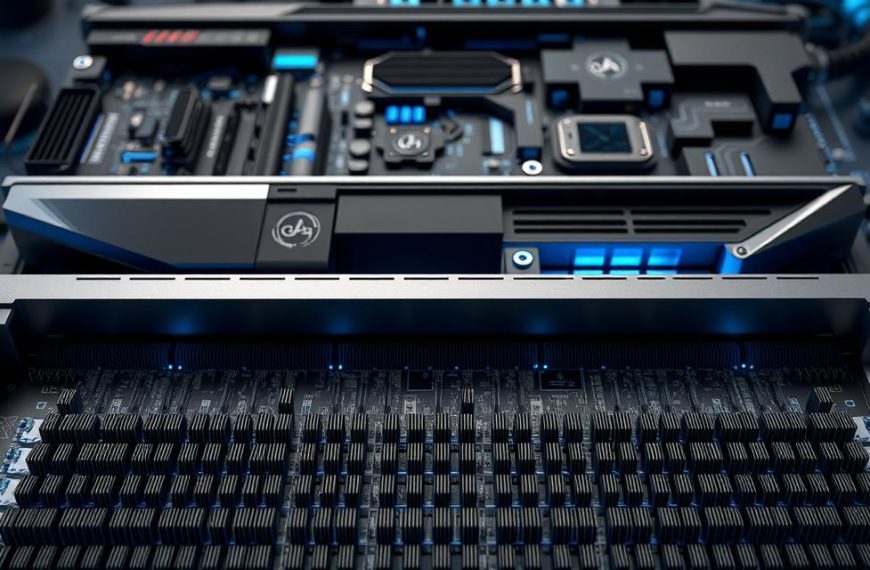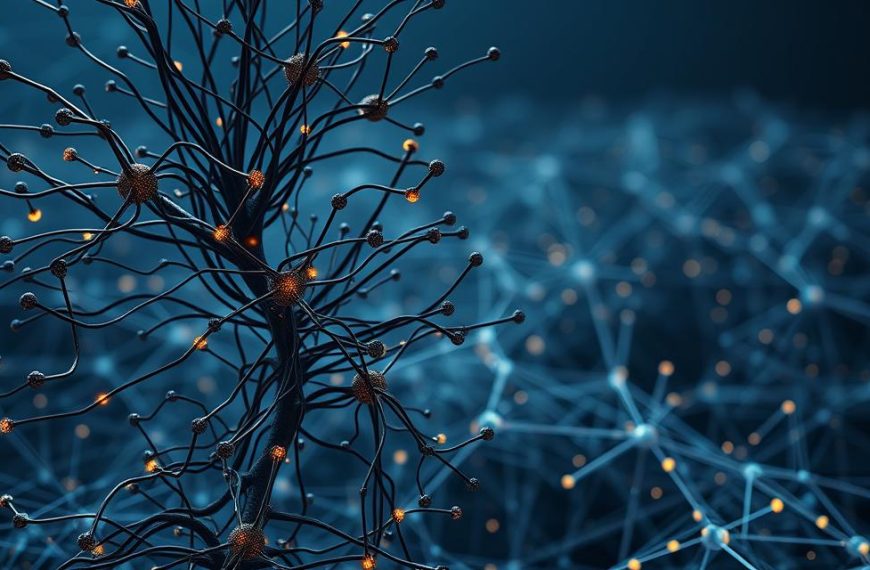Modern neural networks rely on optimisation algorithms to refine their predictive capabilities. These tools adjust model parameters systematically, minimising errors during training while improving generalisation on unseen data. Without effective learning strategies, even sophisticated architectures struggle to achieve reliable results.
Traditional approaches like gradient descent remain foundational, but newer adaptive methods now dominate frameworks like TensorFlow and PyTorch. Each algorithm balances computational efficiency with convergence behaviour differently—factors critical for projects constrained by hardware limitations or tight deadlines.
This guide compares popular techniques, from momentum-based systems to parameter-specific adaptations. Discover how choices influence training stability in convolutional networks or recurrent models. We address practical considerations, including hyperparameter sensitivity and implementation complexity across diverse datasets.
British developers often prioritise solutions aligning with NHS data protocols or fintech regulatory requirements. Whether deploying vision systems or natural language processors, selecting the right optimiser directly impacts deployment timelines and operational costs.
Introduction to Deep Learning Optimisers
Artificial neural networks process information through layered architectures, mimicking biological cognition at scale. These systems transform raw input data into actionable insights via interconnected nodes, each applying mathematical operations to signals received from preceding layers.
Overview of Deep Learning Concepts
Three core elements define modern architectures:
- Activation functions determine whether neurons fire signals forward
- Weight matrices govern connection strengths between layers
- Bias terms shift activation thresholds for specialised pattern detection
During training, millions of parameters undergo adjustments to reduce prediction errors. This iterative refinement separates machine learning from static rule-based programming.
Role of Optimisers in Model Training
Optimisation algorithms orchestrate parameter updates by analysing gradient signals from loss functions. They balance two priorities:
- Converging rapidly towards optimal solutions
- Avoiding unstable oscillations or premature stagnation
Without strategic weight adjustment methods, networks risk overfitting training data or requiring impractical computational resources. Adaptive techniques now automate learning rate tuning across dimensions – a leap from manual hyperparameter configurations.
Why Optimisers are Crucial in Deep Learning
Training complex architectures without effective optimisation strategies often leads to computational gridlock. These algorithms act as navigational systems, steering model parameters through high-dimensional spaces to locate optimal configurations. Their influence extends beyond mathematics – they determine whether projects meet NHS compliance deadlines or require costly hardware upgrades.
Impact on Accuracy and Training Speed
Optimisers directly govern how quickly loss functions reach minimal values. Adaptive methods like Adam automatically adjust step sizes per parameter, preventing overshooting in shallow layers while accelerating convergence in deeper ones. Consider these outcomes:
| Optimiser | Training Time Reduction | Accuracy Improvement |
|---|---|---|
| SGD | 15-20% | Moderate |
| Adam | 35-50% | High |
| RMSprop | 25-40% | Variable |
Faster convergence allows UK fintech firms to retrain fraud detection models weekly rather than monthly. In medical imaging systems, precision gains translate to fewer false positives during tumour screening.
Challenges Addressed by Optimisers
Vanishing gradients cripple recurrent networks processing lengthy text sequences. Momentum-based techniques counteract this by sustaining update direction across iterations. Exploding gradients in transformer models get tamed through gradient clipping – a standard feature in modern frameworks.
Local minima trapping remains problematic in recommendation systems. Advanced algorithms employ noise injection or second-order derivatives to escape suboptimal regions. These solutions enable energy companies to optimise grid load predictions despite volatile weather data.
What are the optimizers for deep learning?
At the heart of every successful neural architecture lies a sophisticated adjustment system. These mechanisms iteratively modify model parameters to align predictions with real-world outcomes. Their mathematical precision transforms raw computational power into actionable intelligence.
Definition and Key Functions
Optimisation algorithms serve as automated tuning tools for machine intelligence systems. They calculate directional adjustments using gradient signals from loss functions, which quantify prediction errors. Three primary objectives guide their operation:
- Minimising discrepancies between expected and actual outputs
- Maintaining stable convergence across network layers
- Balancing computational efficiency with precision
First-order derivatives drive parameter updates, while advanced variants incorporate momentum or adaptive learning rates. For UK healthcare applications, this ensures MRI analysis models adapt swiftly to new scanning protocols without compromising diagnostic accuracy.
Modern frameworks employ these algorithms to handle non-convex error landscapes common in natural language processing. Financial institutions leverage their capabilities to update fraud detection systems hourly, staying ahead of evolving cybercrime tactics.
Types of Deep Learning Optimisers Overview
The landscape of neural network training tools has diversified significantly since early computational models. Modern systems employ distinct mathematical frameworks to balance speed, stability, and resource utilisation. This taxonomy groups techniques by their approach to parameter adjustment and historical development.
Gradient Descent and Variants
Basic gradient descent remains the cornerstone of parameter tuning. It calculates weight updates using entire datasets, ensuring precise directional adjustments. Three primary variants have emerged:
- Stochastic (SGD): Processes single data points, accelerating training at the cost of noise
- Mini-batch: Balances efficiency and stability through subgroup analysis
- Momentum-enhanced: Maintains update velocity across iterations
These methods underpin many UK fintech models due to their predictable resource demands.
Adaptive Methods and Their Evolution
Second-generation algorithms dynamically adjust learning rates per parameter. Key innovations include:
- Adam’s momentum-based bias correction
- RMSprop’s gradient magnitude normalisation
- AdaGrad’s automatic rate reduction for frequent features
Such approaches dominate medical imaging systems where sparse data requires nuanced handling. Their evolution reflects growing demands for energy-efficient training across NHS cloud infrastructures.
Choosing between these families depends on dataset scale and hardware constraints. Subsequent sections analyse specific implementations for real-world British applications.
In-depth Look at Gradient-Based Optimisation Techniques
Navigating error landscapes requires precise mathematical tools to guide model parameters towards optimal configurations. Gradient-based methods achieve this through systematic adjustments informed by loss function evaluations. Their effectiveness varies across applications – from processing NHS patient records to analysing London stock market trends.
Standard Gradient Descent Explained
The foundational algorithm initialises coefficients, calculates cumulative errors, then updates weights using this formula:
θ = θ − η⋅∇θJ(θ)
Here, η represents the learning rate controlling step size. While effective for convex functions, two limitations emerge:
- Full-batch processing becomes impractical with large datasets
- Fixed step sizes struggle with ravines in non-convex landscapes
Stochastic and Mini-Batch Approaches
Modern implementations address scalability through data sampling. This table contrasts key variants:
| Method | Batch Size | Compute Cost | Convergence Stability |
|---|---|---|---|
| Batch GD | Entire dataset | High | Smooth |
| SGD | Single sample | Low | Noisy |
| Mini-batch | 32-512 samples | Moderate | Balanced |
Stochastic gradient descent introduces randomness that helps escape local minima, crucial for training recommendation systems on UK e-commerce platforms. Mini-batch approaches dominate practical implementations, offering a compromise between precision and speed favoured by British AI startups.
Exploring Adaptive Learning Rate Methods
Modern optimisation techniques increasingly automate critical training decisions. Adaptive algorithms dynamically adjust learning rates per parameter, addressing uneven feature distributions in real-world datasets. This innovation proves vital for UK healthcare systems processing both dense MRI scans and sparse patient records.
AdaGrad and Its Applications
AdaGrad revolutionised parameter tuning by scaling learning rates individually. It accumulates squared gradients over time, applying this formula:
ηi = η / √(Gi,i + ε)
Key advantages include:
- Automatic rate reduction for frequent features
- Enhanced performance on sparse data common in NLP tasks
- Elimination of manual rate tuning
British e-commerce platforms use AdaGrad to handle product recommendation systems where user behaviour patterns vary widely.
RMSprop: Concept and Formula
RMSprop counters AdaGrad’s aggressive rate decay using exponential moving averages. Its update rule:
E[g²]t = γE[g²]t-1 + (1-γ)g²t
This approach:
- Prevents monotonically decreasing rates
- Accelerates convergence in non-stationary tasks
- Excels in speech recognition systems for UK call centres
| Feature | AdaGrad | RMSprop |
|---|---|---|
| Gradient Handling | Cumulative sum | Moving average |
| Rate Adaptation | Aggressive decay | Controlled decay |
| Best For | Sparse features | Non-stationary objectives |
Understanding the Adam Optimiser
Balancing speed with precision remains a critical challenge in neural network training. The Adam algorithm addresses this through adaptive moment estimation, combining historical gradient data with real-time adjustments. Its design prioritises efficiency – a key requirement for UK developers working under NHS cloud infrastructure constraints.
Adaptive Moment Estimation Principles
Adam calculates individual learning rates by tracking two gradient metrics: mean (first moment) and uncentred variance (second moment). This dual approach prevents extreme parameter updates while maintaining momentum across iterations. Exponential decay rates typically set at 0.9 and 0.999 ensure recent gradients influence adjustments more than older data.
Advantages and Potential Limitations
Key benefits include:
- Minimal hyperparameter tuning compared to basic gradient descent
- Automatic rate adaptation for sparse features
- Compatibility with distributed training systems
However, studies suggest SGD sometimes achieves better generalisation on small datasets. For British fintech models processing millions of transactions, Adam’s computational efficiency often outweighs this limitation.


















